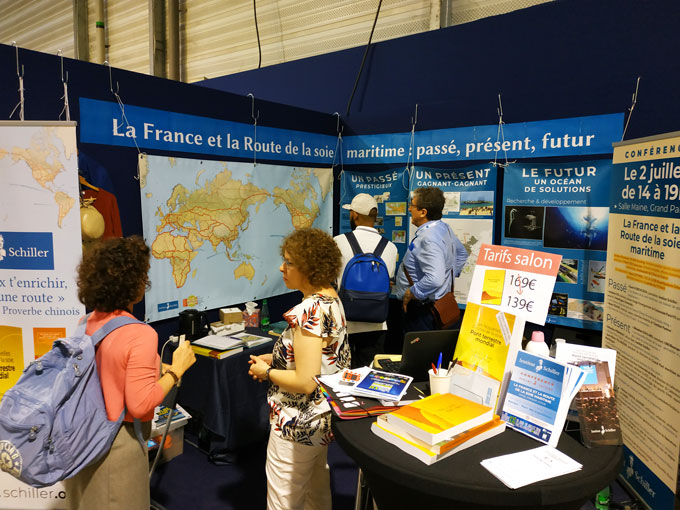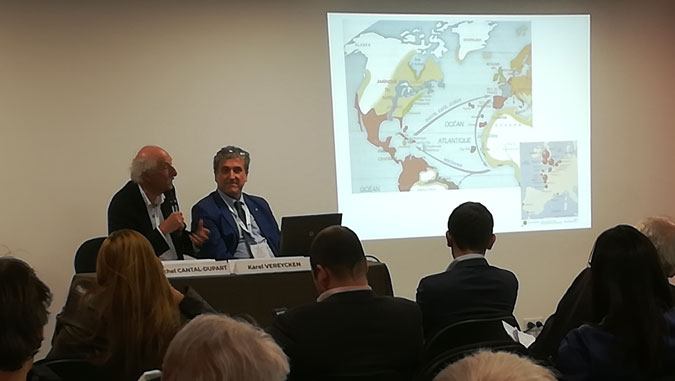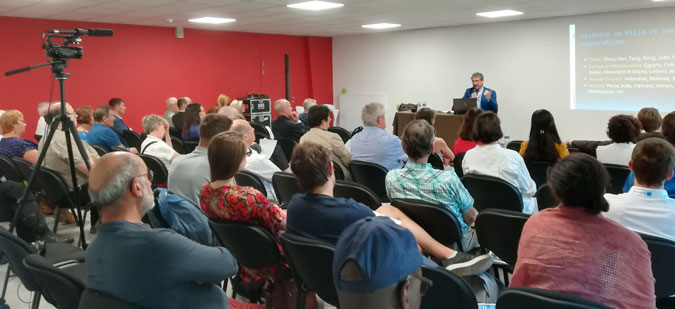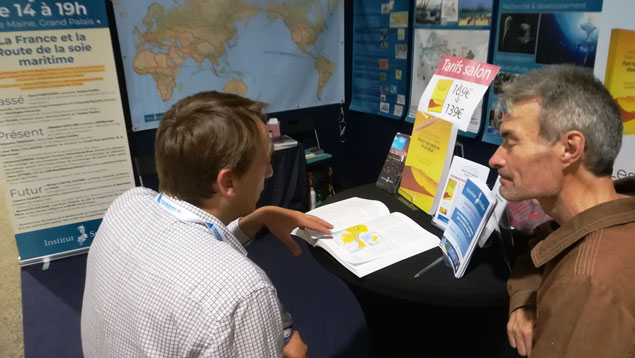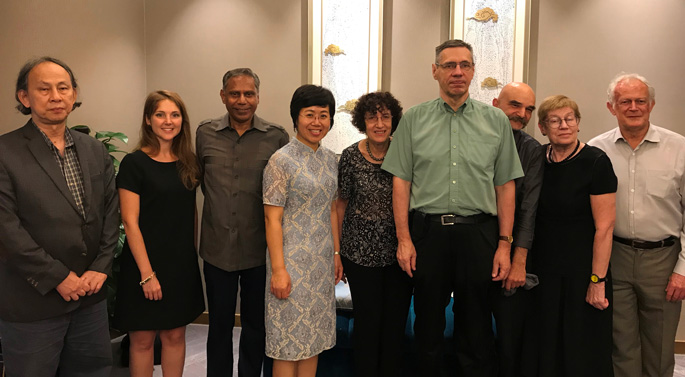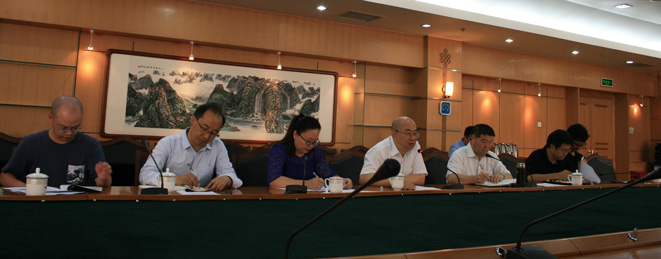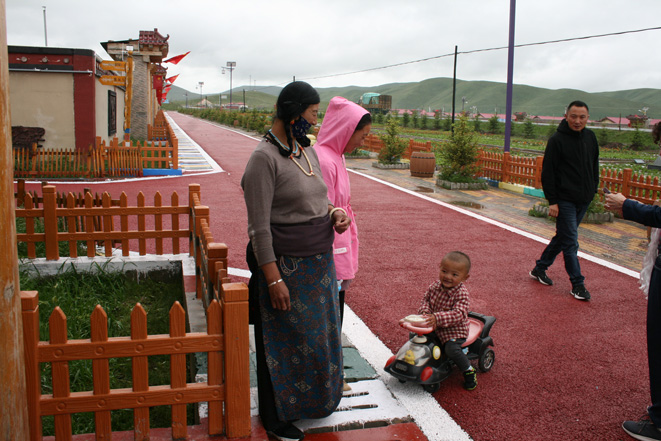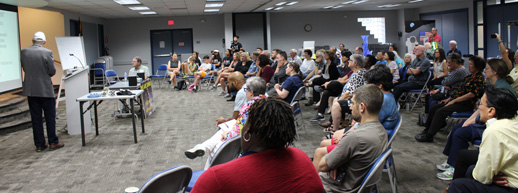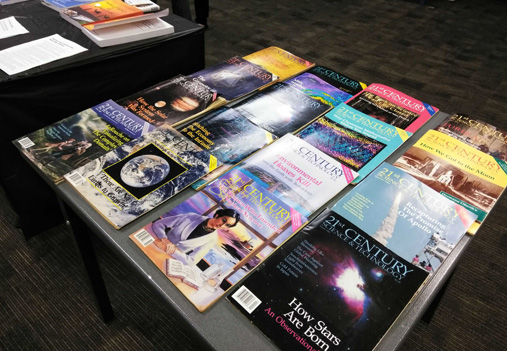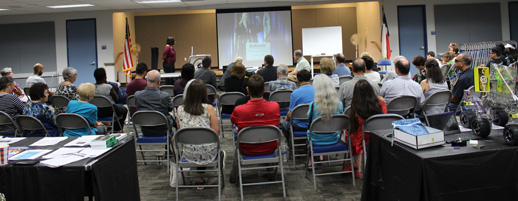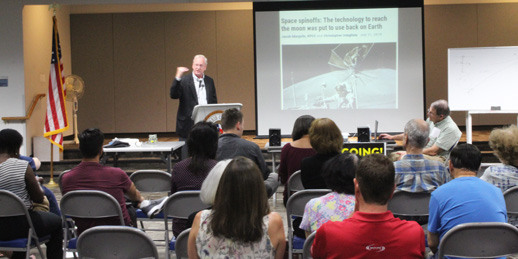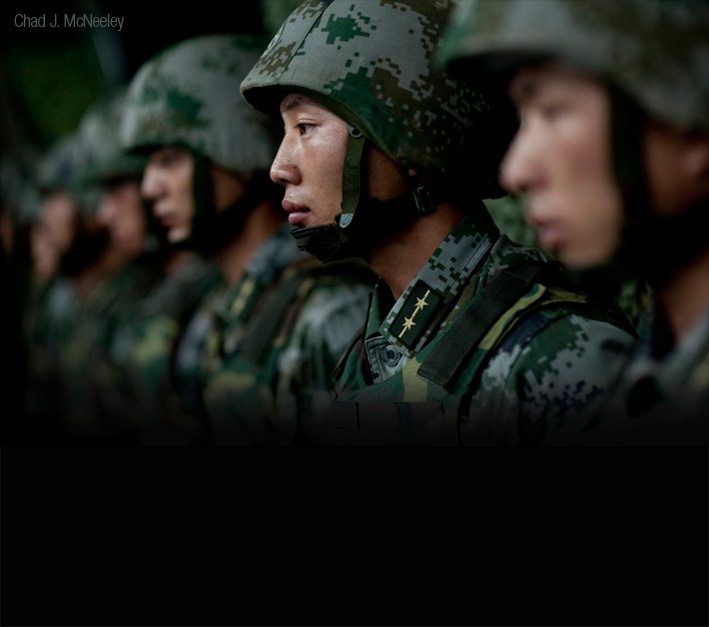In this week’s webcast, Schiller Institute leader Helga Zepp LaRouche reviewed the latest financial swindle coming from the Black Rock group as an example of the desperate efforts to buy some time to defend a crashing system. While its promoters refer to this plan as a “regime change” in financial policy, it is just another effort to flood the system with “helicopter money”, to protect $1.5 quadrillion of worthless assets. This was exposed in the 1990s by Lyndon LaRouche, who developed the pedagogy of his “Triple Curve” to show why this approach will destroy the physical economy, and will lead to chaos.
This is the backdrop to the escalated destabilization of China, which shows the British hand, and that of their allies such as Bolton and Pompeo, in a vain effort to prevent the rise of China, and its BRI policy. While Trump wants a deal with China, his opponents, both within and outside his administration, are putting the world on a dangerous course.
One significant, positive development she identified is the coverage, in the Guardian, the Washington Post, and the Financial Times, of the Dark Age ideology behind eco-fascism, and how it is being used to create a green bonanza for otherwise bankrupt financiers.
These developments are part of an incredible process, which shows that the system is not working, and opens the prospect that growing numbers of people can be brought to see that the solution depends on the proliferation of scientific ideas and great culture — and that is the basis of optimism.
TRANSCRIPT
HARLEY SCHLANGER: Hello, I’m Harley Schlanger from the Schiller Institute. Welcome to our webcast today with our founder and President Helga Zepp-LaRouche. It’s Aug. 21, 2019.
And we’re in the midst of an extremely turbulent world situation, with things flying all over the place, events taking place, some surprising developments. And Helga, I guess the place to start is the financial situation, where there are some completely crazy proposals being floated which show that the crash is coming. So why don’t you start there?
HELGA ZEPP-LAROUCHE: I think the next financial crash is coming with absolute certainty. It’s coming on like a big tsunami. The only question which is not yet decided is will it be this year, which could very well happen, or will the measures proposed by the central banks and the G7 governments, will that be sufficient to stop a blowout this year and bring it into the next year — but for sure, before the Presidential election in the United States 2020.
So, the signs a many-fold, but I think one of the more telling proposals, is that now the question of “helicopter money” has come out quite openly, and this in the form of a paper proposed by BlackRock. This is the largest private equity firm in the world, and they’re involved in all kinds of things. They have produced this paper for the Jackson Hole meeting which takes place at the end of this week [Aug. 22-24]. This is the meeting where all the top bankers and financial government officials of the world, once a year gather.
What this proposal is, they call it a paper for “regime change,” to abandon the so-called “independence” of the central banks. Now, if you think this is sounding like what we say, that we should go back to a national banking system, that’s quite the opposite, because what they propose is to sort of merge the governments and the central banks, and go to what they call “direct investment” or direct delivery of money to anybody who needs it. And when they talk about meeting the inflation requirements, they don’t mean physical goods, or anything like that, but what they’re talking about is to keep the altogether, estimated $1.5 quadrillion derivative bubble going.
And if people remember the famous “Triple Curve” of Lyndon LaRouche, a pedagogical device which he developed in 1995, for a conference in Rome, in the Vatican, where he in a very astounding but simple and convincing way, showed how the financial and the monetary aggregates are moving in a hyperbolic direction upwards to a certain point, while the real economy is moving downwards, and going down. And we have now reached the point where any kind of liquidity pumping you can imagine is not going to be sufficient to maintain this bubble. So, we are heading toward the storm of storms, and there is absolutely not going to be any solution, except those which were proposed by Lyndon LaRouche: Glass-Steagall; nationalize the central bank, making it a National Bank in the tradition of Alexander Hamilton or for that matter the Kreditanstalt für Wiederaufbau in the postwar reconstruction plan in Germany; and then establish a new, international credit system, a New Bretton Woods system; and then go into a crash program for fusion, for space research cooperation, and cooperate with China on the New Silk Road.
Unless this package is being put on the table, there is nothing going to stop this crisis. But I’m optimistic that things are actually moving in a direction that the implementation of the LaRouche solution is not impossible at all.
SCHLANGER: Helga, just to make it clear to our viewers: The proposal that’s being made is not to deal with the debt situation in any sane way, but to allow the debt to continue to be carried by creating more debt, by pumping more money in. Is that what the BlackRock proposal ultimately boils down to?
ZEPP-LAROUCHE: Yeah. They’re doing already everything you can imagine. Since 2008, they’re doing quantitative easing, pumping money; then they went to zero interest rates, now they’re going into negative interest rates, and not only for the larger accounts, but there is now a move to even go to negative interest rates for savings and loans banks, and that is pure, simple stealing out of the pocket of the so-called small people. If you have any savings for your pension, they’re just going to take that, step by step, away. So even the Bavarian Minister President Söder is now proposing legislation prohibiting negative interest rates for accounts which are below EU100,000. So, he obviously knows this is an issue where the population really gets completely mad, because it directly affects them in the most direct way.
So I think that the central banks have lost all ability to actually intervene, because they have used up all the instruments, they have all not worked, and this is why we are pushing the LaRouche solution, as the only way to solve this problem.
SCHLANGER: And while they’re trying to deal with this, what we’re seeing is a worsening of the situation. We’ve talked before on this webcast about Deutsche Bank. Now there’s new evidence that Commerzbank is following in the same path.
ZEPP-LAROUCHE: Yeah, Commerzbank, they are talking about closing 400 of their 1,000 branches, laying 9,500 employees, and their stock has dropped in the last several months, from EU24 to around EU6. So this is really another case, just like Deutsche Bank, where you see the absolute inability of the present liberal system to solve these problems, and Commerzbank is half-owned by the state, so this is also a sign of the times. And these are not the only banks are in this condition: This is just the thing which is out in the news in Germany, but that is the condition of more or less the entire Western banking system.
SCHLANGER: Another example of failing to learn the lessons is Argentina, where the present government of Macri followed the IMF policies — austerity, bailouts; and they were just completely crushed in the primary elections, and then they come out and announce they’re going to continue doing the same thing. This could be a trigger for the crash, couldn’t it?
ZEPP-LAROUCHE: Yes. Because this is highly contagious. I think the inflation, the collapse of production, all of this the result of the Macri policy, is throwing a bond crisis in Argentina on the table, and that could go to any emerging country — Turkey, Brazil, it would even take larger countries. So, it’s really one more element of this pending blowout.
SCHLANGER: Partly what we’re seeing also as this financial crisis is coming down the pike, is an escalation of destabilization, largely run by the same people who created the financial crisis, the City of London and others. The situation in China, as we covered it last week, has continued to worsen, with other aspects of encirclement. Where does that stand now?
ZEPP-LAROUCHE: Well, I think there is an enormous amount of black propaganda, transmitted by the media in Europe and in the United States, who all claim that the demonstrations in Hong Kong are all so peaceful, and people are so freedom loving and so forth. But this is really — I’m not saying there are not some local issues; if you have a liberal society, which Hong Kong was under the British governorship for many decades, it is quite natural that you would have such a reaction. But this was far from being peaceful: You had these acts of violence, which were documented in videos, police stations being attacked, the airport occupied, the local parliament being violently attacked, so this is not that peaceful at all. And that this is also showing some British manipulation, which the Chinese media have published in the meantime, quite a bit, that all of this goes back to the British hand, the Opium Wars: The fact that Hong Kong at all became British, is the result of the Opium Wars!
Now, in that light, this is really absolutely scandalous, that two students went to the British Parliament and were given the floor, to demand the reinstitution of the Treaty of Nanjing and the Treaty of Tientsin. These were the infamous British-imposed treaties after the Opium War, which made Hong Kong a British Crown Colony and which allowed the sale of opium in China. So if you have students demanding the reincarnation of these legislations, if that’s not giving the show away, I don’t know what is.
And it’s quite interesting that there was an article in the American paper The Hill, which points to the fact that everybody in the United States supports these “freedom-loving people” — Congress, Lindsey Graham, Nancy Pelosi, Bolton — but that one voice is missing in the chorus, and that is the voice of Donald Trump.
So, I think this is important, because you have otherwise an enormous effort, and unfortunately, Trump seems not to be in control of all of what is happening in the name of the U.S. administration around the world, but you have a complete escalation against China. The effort to contain the rise of China, with many operation, Taiwan being one of them. There was just the sale of $2.2 billion worth of military equipment to Taiwan. The Taiwan government offered asylum to the protesters from Hong Kong, and the Chinese Foreign Ministry basically said Hong Kong and Taiwan touch the “core interests” of China, and therefore there will be absolutely no capitulation on the side of mainland China on these two points. But then, you also have the orchestration of the so-called Uighur in Xinjiang; then you have the Huawei case. Pompeo is continuing, even so Trump obviously wants to get the deal with China, for sure, before next year’s election, but Pompeo is making bellicose statements despite that.
So you have an atmosphere of, really, very, very negative — I forgot to mention the South China Sea — so I think from the standpoint of China, which has tried to change the policy in the direction of a New Paradigm, new international relations — they are being bombarded right now with a quite significant assault. And this is very dangerous, because there is no solution to the present world crisis without China. And that’s a fact. So, we have to see, but I think the record of who is doing this geopolitical manipulation has to be published, and that hopefully will help to stop it.
SCHLANGER: And sticking with this strategic picture, the Russians and the Chinese have issued a couple of statements, including warning against the attempt to do regime change against both them. Then, there’s a very significant meeting between President Putin and President Macron which just took place, leading up to the G7 meeting. How do you assess that meeting, Helga?
ZEPP-LAROUCHE: I think that was quite good. It was in preparing the G7 meeting in Biarritz [Aug. 24-26], which Putin is obviously not attending, because Russia was kicked out of the G8. But I think the fact that Putin and Macron met in France at the summer residence of Macron, and Macron basically said that France wants to play a role to reopen ties between the European Union and Russia, because there would be no solution to the world’s problems without Russia, I think this is very positive.
Putin on his part, said some very interesting things: They obviously discussed Syria, Ukraine, Libya, and so forth. But then somebody mentioned the idea of a Europe from Lisbon to Vladivostok. And then Putin said, “Well, this is not an idea which comes from us. This is actually an idea which comes from Charles de Gaulle, who talked about “Europe from the Atlantic to the Urals,” but Russia is much larger, it goes to the Pacific; it’s a European civilization and culture, and this idea of a “Europe from Lisbon to Vladivostok” may sound impossible today, but sometimes the impossible becomes the inevitable very quickly.
And I think that is very interesting, because I think — I don’t know, I didn’t talk to Putin — but I think this is a prophetic foresight, that once you go into an absolute upheaval and a collapse of the present order, then naturally, one resorts to the only concepts available. So I think this idea is quite interesting, and I don’t want to comment on it any further, but it’s for sure, food for thought.
SCHLANGER: Also it’s interesting, Macron and then joined by Trump, emphasized that Russia should be brought back in to make it the G8 again.
Helga the other situation in Europe, that’s really quite explosive, is Italy, where the government was brought down yesterday. What do you think is going to happen there?
ZEPP-LAROUCHE: First of all, there is a wide discussion that this is the result of “Ursula,” referring to [EU Commission President-elect] Ursula von der Leyen, because she met with Prime Minister Conte and people really think that that idea, to cause a fait accompli where Deputy Prime Minister Salvini was basically forced to force this crisis, anyway, that remains to be seen.
Now, you have a situation: Conte made a speech yesterday in the Senate, where he accused Salvini of not obeying the rules of the EU. Salvini said something more interesting — he actually talked about his vision for Italy for 2050, so that idea of Lyndon LaRouche about the next 30, 40, 50 years, the idea of the Chinese thinking in terms of 2050, it’s good if politicians start to have a little longer vision than the next election for their own post. So he, among other things, talked about infrastructure, and the American Constitution, that the people have a right for the “pursuit of happiness.” So this is quite good.
Where this thing will go is completely open. Conte went to the State President Mattarella [to offer his resignation], and he will now see if another combination can be formed for a government, and if that doesn’t function, there will be new elections. Now, on some other combination, the only way how the Five Star party could form a government with the Democratic Party (PD) would be with the help of Berlusconi’s party Forza Italia which is completely split. So it’s impossible at this point to say how this will turn out — will it be a short-lived new government, with many factors in it? or will it be new elections? We will see.
But it just is one more sign that Europe is in a complete turmoil. We will have the Brexit in October, and the outcome of the elections in Germany also for sure, will change the landscape, because of the rise of the AfD which is expected in the new local elections. So Europe is in a turmoil and it definitely would need completely different unifying principle that that of cooperating with the New Silk Road.
SCHLANGER: To shift to the United States, I think it’s impossible to talk about the U.S. situation without talking about the work of the LaRouche organization, and this became clear in two ways: One was a Washington Times attack on Lyndon LaRouche and his organization which came out Aug. 19. And the other was the exposure of “ecofascism” in the Washington Post. What do you make of this, Helga?
ZEPP-LAROUCHE: Well, first of all, there have been quite a number of attacks on our international movement, which in one sense means we’re doing something well, because if we wouldn’t be doing important things, they wouldn’t find it necessary to attack us. So there was a one-hour slander on the Swedish radio; then earlier a London Times article; and now in the Washington Times, complaining that despite the fact that my husband has died, that we are still moving. And I think that is a very good sign.
Now, the exposure of “ecofascism,” is really very interesting, because for a very long time, we were practically the only ones who went into the historical roots of where all this is coming from, who is financing it, and that is now coming out, and I think it’s very useful. There was an article in the Guardian and then in a different form in the Washington Post, and what these articles basically admit is that the recent mass shootings in the United States, really go back to the absolute despair and pessimistic world outlook of the ecological movement, by basically saying that if the world is so overpopulated and polluted, then killing people is the only thing one can resort to.
Now, that is quite an admission. And then, some of these articles, go into quite some length of the eugenics movement of the ’20s and ’30s, which we have documented in large part; the fact that out of the eugenics movement, which obviously was the basis in connection with the race policy of the National Socialists, that was obviously discredited with the collapse of the Nazi government; and then Julian Huxley basically, in his position as head of UNESCO in 1946 said it quite openly: He said, now this eugenics is discredited for many years, so we have to basically rename it, conservation movement, protection of nature. So that is all mentioned, and also the role of something called “Federation for American Immigration Reform” (FAIR), whose founder is a guy called John Tanton — whom we attacked already, I would say 30, 40 years ago, because he was part of the so-called Paddock Plan of ’70s, which was the idea to halve the population of Mexico. So this is really coming out very, very openly, but basically making the connection, even saying “ecofascism” — that already is a major important characterization, because that is what it is; then these historical ties are also covered, people should really look at our documentation, because we have published a lot of this over the years.
SCHLANGER: People can go to our website, there’s a lot of material that we’ve put out, developing in depth this whole question of where this ecological fascism comes from; and that this in fact is what’s behind the Green New Deal, the FridaysForFuture. You have this publicity stunt now with Greta Thunberg on a millionaire’s yacht coming over to the United States. But this is being exposed: In fact, Helga, you brought up the craziness of the woman who founded the Extinction Rebellion. It’s hard to believe that she’s openly calling for use of psychotropic mushrooms to discover how to save the planet. This is probably some of the reason people are publishing this, because it’s so hard to believe.
But it does bring up the bigger question, which is science versus fascist ideology. And we see this on many fronts, but I think it’s important for you to lay out for people why this is the real fight.
ZEPP-LAROUCHE: Well, before I say something to that, I should mention that there is an amazing article in The Sunday Times of London on Aug. 18, illustrating another aspect of Greta Thunberg, basically saying that this is designed to cause the biggest bonanza for the financiers — that coming from The Times, I find quite interesting. And they basically say, there is one narrative, that Greta, the teenager, was sitting for a year in front of the Swedish parliament and all of this was innocently triggering this whole change.
But then, they actually reveal quite a different story, namely, that this guy Ingmar Rentzhog, who is her manager, so to speak, was actually trained by Al Gore, that he is connected to the top think-tank in Sweden, Global Challenge, which in turn, is both connected to a former Swedish minister who is absolutely identical with the Swedish oil and energy industry, and that they’re going to make the biggest bonanza ever by getting everybody to go into green financing. Now, that is really, absolutely the case, and I think the real narrative of Greta Thunberg — she may not even know all of this; maybe she does, may she doesn’t — but this really shows that this poor girl is completely instrumentalized. And that the idea to go now for green financing, is the last effort to prevent, or postpone the collapse of the financial system by causing a straw fire, by causing a last phase boom. But obviously, this would completely destroy the real economy, and therefore it’s very good that these stories are now coming out, because maybe there is a return to reason in time, before disaster is complete.
SCHLANGER: And as you pointed out in a discussion with our colleagues yesterday, this makes the issue very clear, real science versus fascist ideology.
ZEPP-LAROUCHE: Yeah. What this article which I just mentioned also says, it shows the Club of Rome, they had put out recently an emergency action plan, and that the so-called “talking points” of Greta are exactly identical according to these talking points of the Club of Rome! This is really incredible, because the Club of Rome are not scientists, they are quacks, they are fraudsters, who in 1972 had computers with the end result of what they wanted to say, and then programmed the computer in such a way it would produce this result: namely that the limits to growth had been reach, that the Earth is finite, and then the whole ecology movement grew out of this wrong conception.
So, I think it’s not decided at all, because there is on the other side, now, a growing number of scientists, in 20 countries already, who have basically picked up on the petition of the Italian scientists, who some weeks ago denied the idea that there is any connection between CO2 emission and climate change, and therefore, they called on the Italian government not to go into these completely costly, and completely ineffective measures. If you want to change the climate, well, first of all, man can probably not do that at all, because the causes of climate change are not the result of his activities, and you cannot influence the millennia old cycles of the Solar System in the Milky Way, the galaxy, the processes on the Sun, the cosmic radiation resulting out of all of this.
So, it is very important that there is now a growing movement of scientists who basically challenge manmade climate change, and they are appealing to the governments, especially in Europe — maybe Trump, who has in any case left the Paris Climate Accord — to reestablish a scientific debate on this issue. And I think people should spread this idea, and contact scientists and get them to get in touch with these scientists. Once we have this resolution — and the Italian one is known — but I think the international one is being circulated right now for many signatures, and it’s supposed to come out in a few weeks. But help to support this campaign, if you agree, that we should really not go into a New Dark Age, which would really extinguish civilization, but not the way the Extinction Rebellion people are talking about it, but because of a lack of production, food, water, and all of these things.
SCHLANGER: It would seem that the Extinction Rebellion is actually for extinction: They just want it through a New Dark Age, through phony attacks on science.
So, Helga, is there anything else you want to cover?
ZEPP-LAROUCHE: Yeah: I think we are in an incredible process, where many, many people realize that this system is not working. It’s not working in Europe, it’s not working in the United States. Our colleagues in the United States report a very interesting pattern, that many people don’t want to hear about parties any more, which I find very good, because party politics is really evil, because it has completely degenerated into lobbyism for particular interests. So I think to go for the common interest, the common aims of mankind, the common good of nations is a much better approach. And we will fight to have a return to the scientific ideas of the physical universe, of natural science, of great Classical art, basically the ideas of Lyndon LaRouche which I can only encourage people to study. If you go to the archives, you can read an enormous amount of articles by Lyndon LaRouche, and it will blow your mind, because these are the most profound conceptions which have developed by anybody to the present time. And therefore, I again ask you to join the fight for the exoneration of my husband, and join our effort to, in time, get the European nations and the United States to cooperate with Russia and China, in a New Paradigm. Because if we do not change the present lunacy of geopolitical confrontation, the world can actually end up in catastrophe, because the crisis points are many, triggers could easily develop into larger conflicts: So we have to have a new cooperation between the United States, Russia, China, and India; and we should not give up the European nations that they can be brought back to reason. So join our effort.
SCHLANGER: Helga on behalf of our viewers, thank you for making this situation coherent and understandable. And now it’s up to people to act on it. So, we’ll see you again next week.











